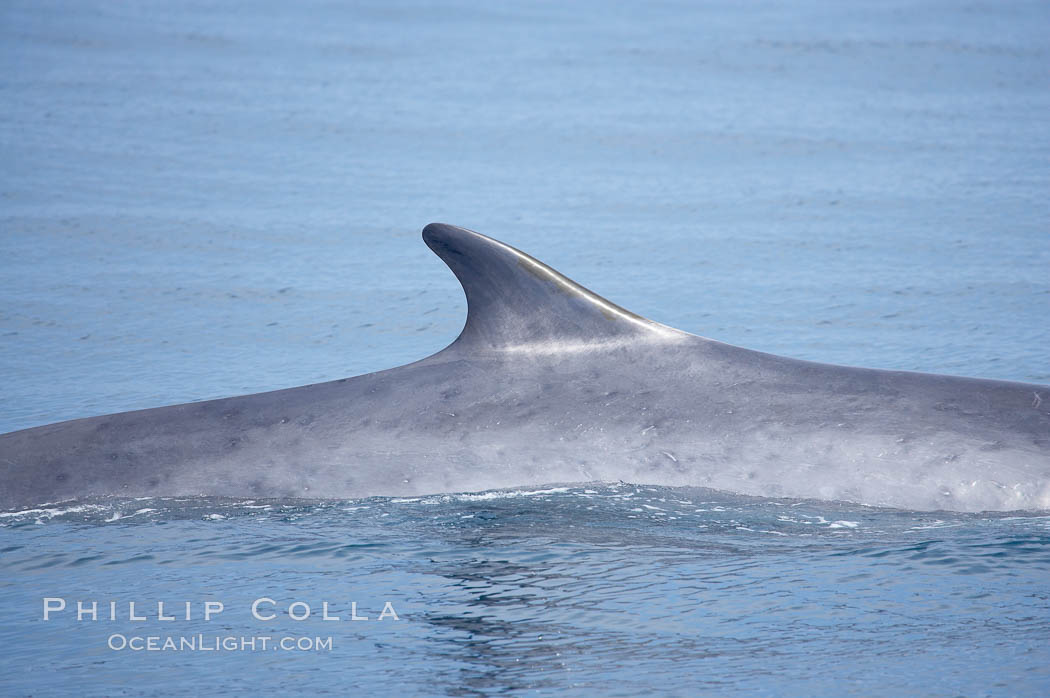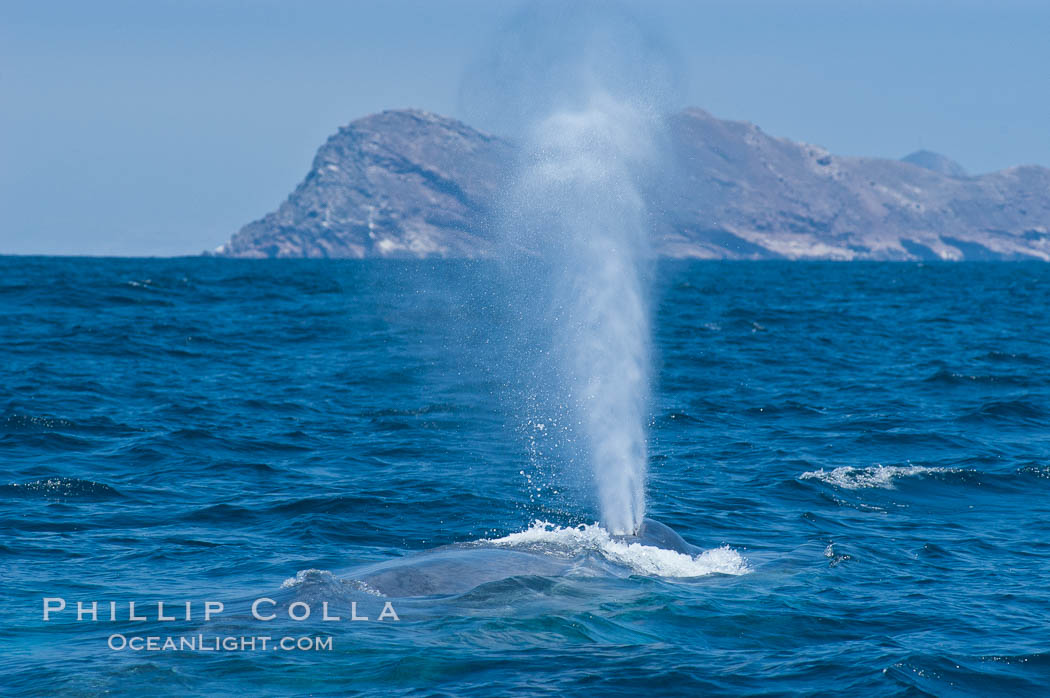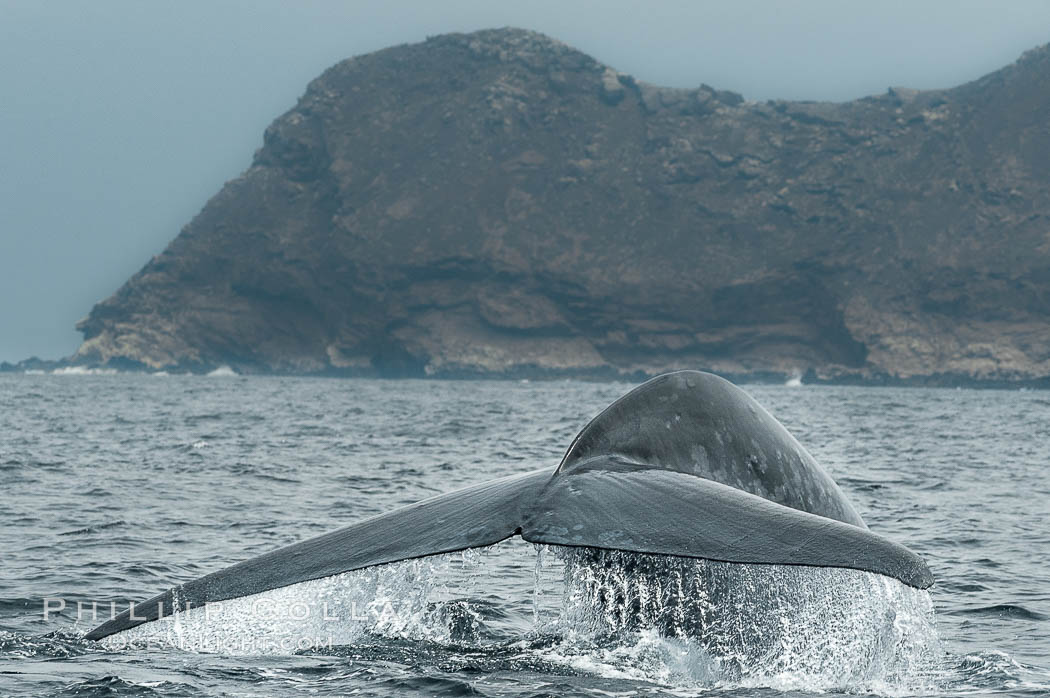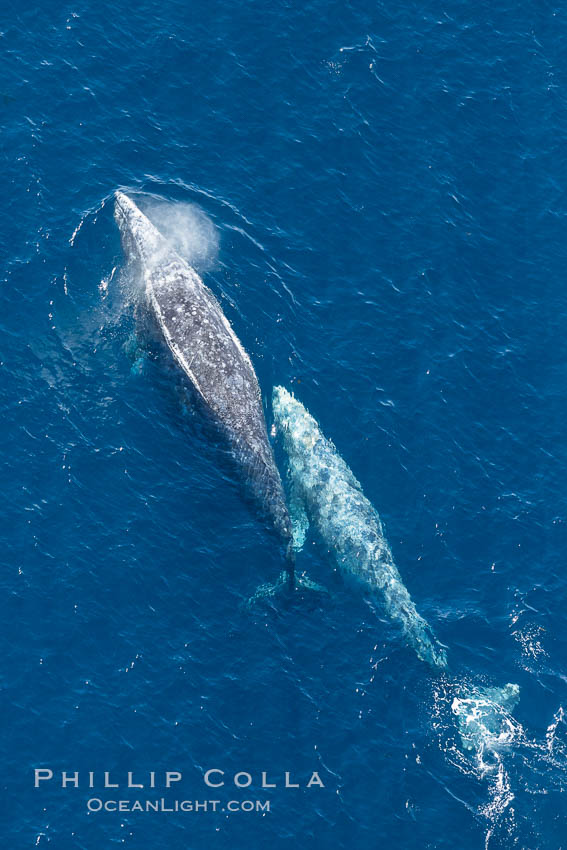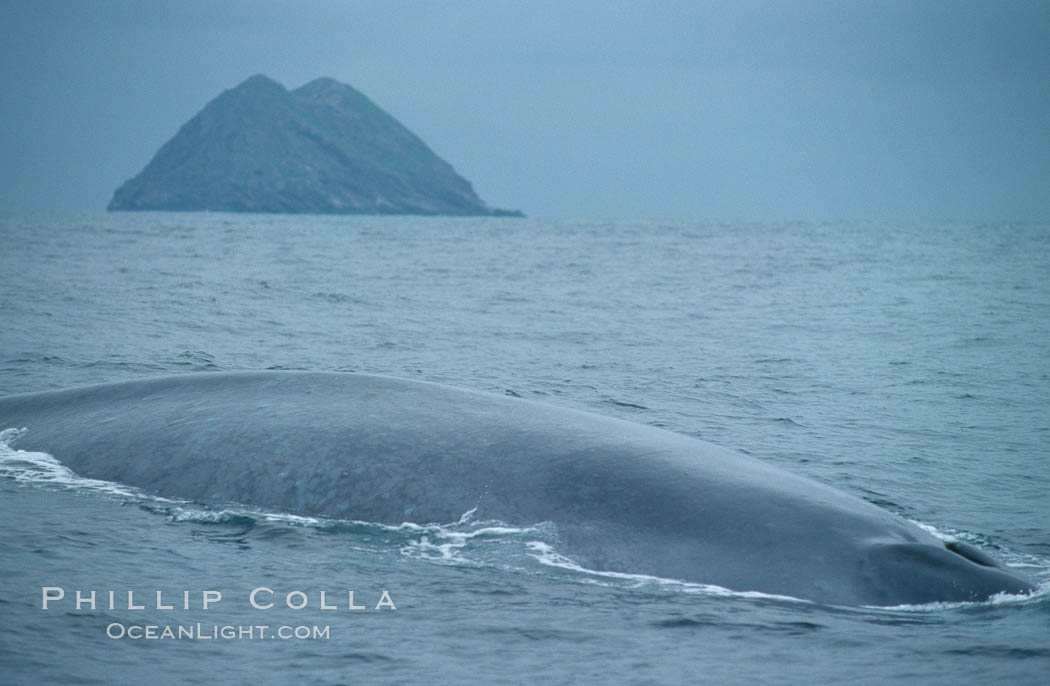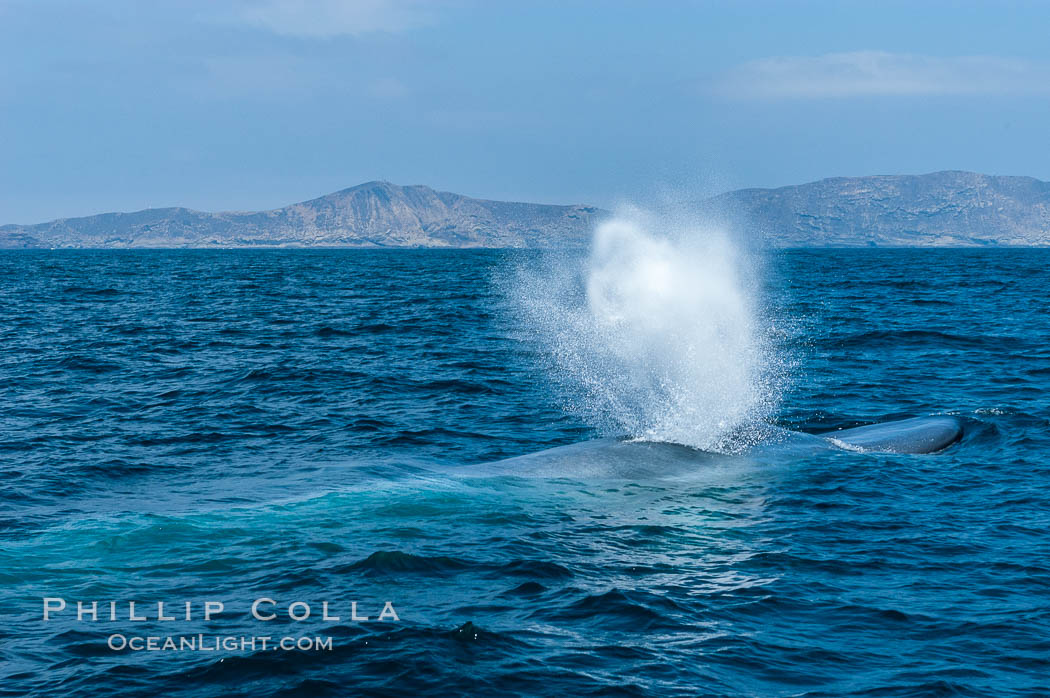Whales visit the Coronado Islands in Mexico throughout the year. During winter months, gray whales (Eschrichtius robustus) pass by the islands, first southbound and a few months later traveling north, during their annual migration between Baja California and the Bering Sea. Fin whales (Balaenoptera physalus) and blue whales (Balaenoptera musculus) may be found at the Coronados year-round but spring and summer months are the best times to see them in the islands, especially if there is the presence of krill which does occur from time to time. All of the photos below were taken at the Coronado Islands.
Fin whale dorsal fin. The fin whale is named for its tall, falcate dorsal fin. Mariners often refer to them as finback whales. Coronado Islands, Mexico (northern Baja California, near San Diego).
Image ID: 12769
Species: Fin whale, Balaenoptera physalus
Location: Coronado Islands (Islas Coronado), Baja California, Mexico
A blue whale blows (exhales, spouts) as it rests at the surface between dives. A blue whales blow can reach 30 feet in the air and can be heard for miles. The blue whale is the largest animal on earth, reaching 80 feet in length and weighing as much as 300,000 pounds. North Coronado Island is in the background.
Image ID: 09497
Species: Blue whale, Balaenoptera musculus
Location: Coronado Islands (Islas Coronado), Baja California, Mexico
A blue whale raises its fluke before diving in search of food. The blue whale is the largest animal on earth, reaching 80 feet in length and weighing as much as 300,000 pounds. North Coronado Island is in the background.
Image ID: 09484
Species: Blue whale, Balaenoptera musculus
Location: Coronado Islands (Islas Coronado), Baja California, Mexico
Gray whales traveling south to Mexico during their winter migration. The annual migration of the California gray whale is the longest known migration of any mammal, 10,000 to 12,000 miles from the Bering Sea to Baja California.
Image ID: 29049
Species: Gray whale, Eschrichtius robustus
Location: Coronado Islands (Islas Coronado), Baja California, Mexico
Blue whale rounding out at surface, North Coronado island in background.
Image ID: 02224
Species: Blue whale, Balaenoptera musculus
Location: Coronado Islands (Islas Coronado), Baja California, Mexico
A blue whale blows (exhales, spouts) as it rests at the surface between dives. A blue whales blow can reach 30 feet in the air and can be heard for miles. The blue whale is the largest animal on earth, reaching 80 feet in length and weighing as much as 300,000 pounds. South Coronado Island is in the background.
Image ID: 09498
Species: Blue whale, Balaenoptera musculus
Location: Coronado Islands (Islas Coronado), Baja California, Mexico
